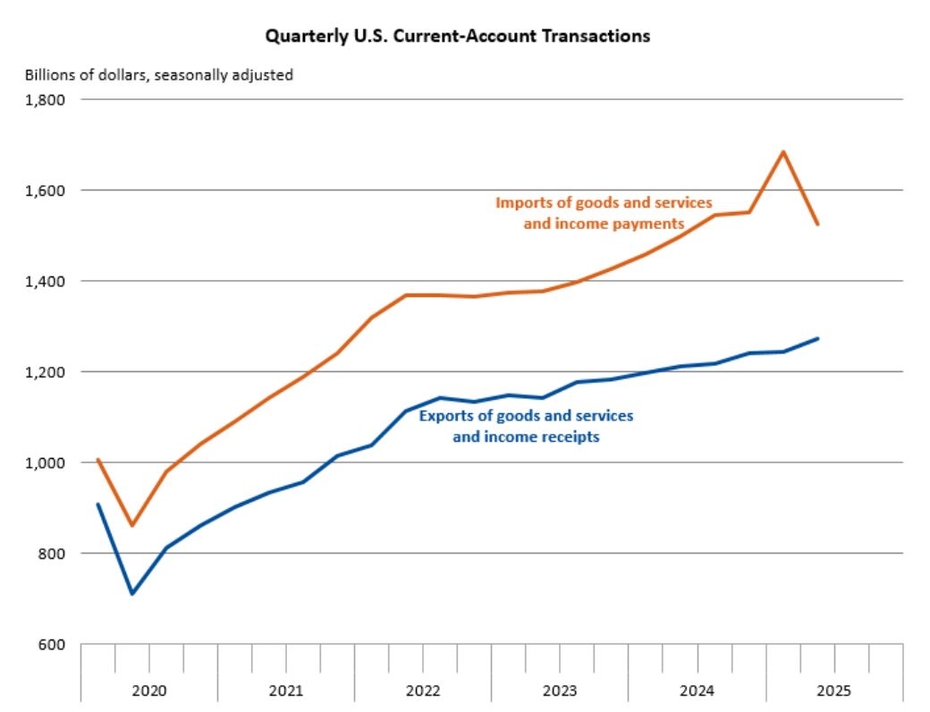On the second day of the second quarter, President Donald Trump announced “reciprocal tariffs” on goods from countries charging exorbitant tariffs on U.S. exports. By the quarter’s end, the U.S. current account trade deficit shrank by 42.9%, the U.S. Bureau of Economic Analysis (BEA) reported Tuesday.
The decrease in the deficit was primarily driven by a $11.3 billion increase in goods exported and a $184.5 billion decline in goods imported:
- The U.S. current account trade deficit fell from $439.8 billion to $251.3 billion.
- As percent of current-dollar GDP, the deficit fell from 5.9% to 3.3%.
- Exports of goods and services rose $28.6 billion, while imports of the same fell $159.9 billion.
- Exports of goods increased $11.3 billion, while imports decreased $184.5 billion.
- Exports of services increased $2.1 billion, but imports of services increased $2.8 billion.
Additionally, the deficit reported for the first quarter was revised down by $10.4 billion in Tuesday’s BEA report.
The current trade account consists of transactions between U.S. residents and nonresidents in goods and services, as well as in primary and secondary income.
On April 2 of this year, Pres. Trump issued Executive Order 14257, establishing reciprocal tariffs designed to offset the onerous tariffs on U.S. goods imposed by other countries. Since that time, Trump has been negotiating for fair trade agreements, such as that he recently struck with the U.K.





